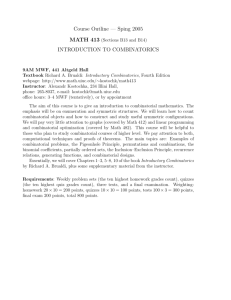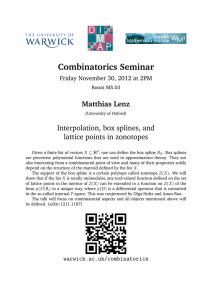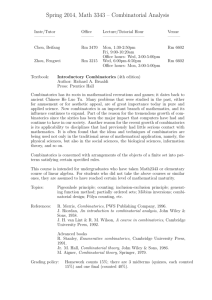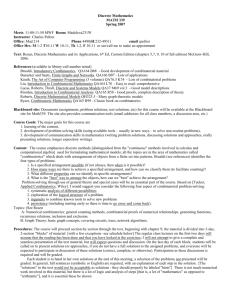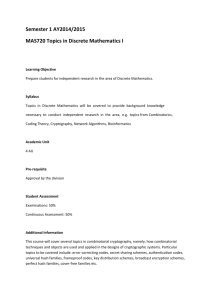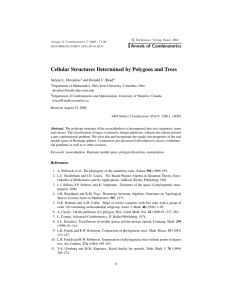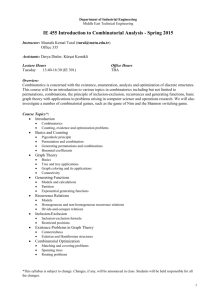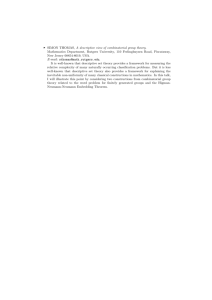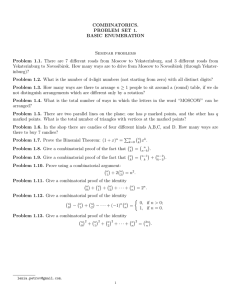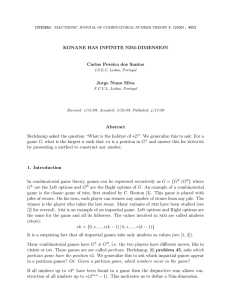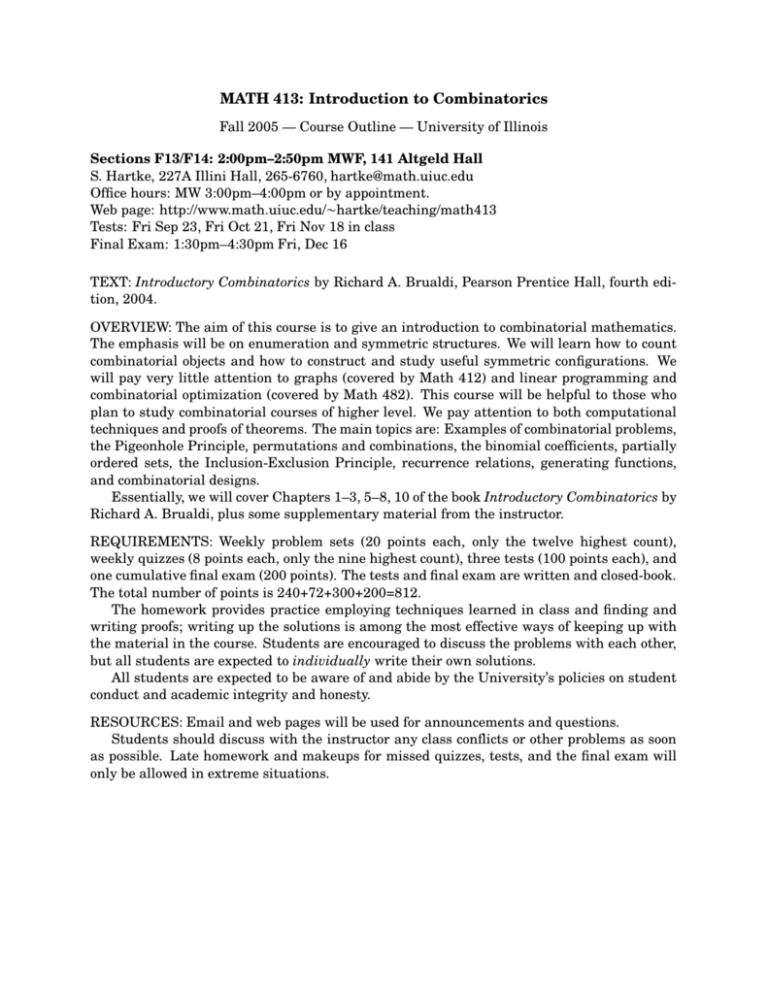
MATH 413: Introduction to Combinatorics
Fall 2005 — Course Outline — University of Illinois
Sections F13/F14: 2:00pm–2:50pm MWF, 141 Altgeld Hall
S. Hartke, 227A Illini Hall, 265-6760, hartke@math.uiuc.edu
Office hours: MW 3:00pm–4:00pm or by appointment.
Web page: http://www.math.uiuc.edu/∼hartke/teaching/math413
Tests: Fri Sep 23, Fri Oct 21, Fri Nov 18 in class
Final Exam: 1:30pm–4:30pm Fri, Dec 16
TEXT: Introductory Combinatorics by Richard A. Brualdi, Pearson Prentice Hall, fourth edition, 2004.
OVERVIEW: The aim of this course is to give an introduction to combinatorial mathematics.
The emphasis will be on enumeration and symmetric structures. We will learn how to count
combinatorial objects and how to construct and study useful symmetric configurations. We
will pay very little attention to graphs (covered by Math 412) and linear programming and
combinatorial optimization (covered by Math 482). This course will be helpful to those who
plan to study combinatorial courses of higher level. We pay attention to both computational
techniques and proofs of theorems. The main topics are: Examples of combinatorial problems,
the Pigeonhole Principle, permutations and combinations, the binomial coefficients, partially
ordered sets, the Inclusion-Exclusion Principle, recurrence relations, generating functions,
and combinatorial designs.
Essentially, we will cover Chapters 1–3, 5–8, 10 of the book Introductory Combinatorics by
Richard A. Brualdi, plus some supplementary material from the instructor.
REQUIREMENTS: Weekly problem sets (20 points each, only the twelve highest count),
weekly quizzes (8 points each, only the nine highest count), three tests (100 points each), and
one cumulative final exam (200 points). The tests and final exam are written and closed-book.
The total number of points is 240+72+300+200=812.
The homework provides practice employing techniques learned in class and finding and
writing proofs; writing up the solutions is among the most effective ways of keeping up with
the material in the course. Students are encouraged to discuss the problems with each other,
but all students are expected to individually write their own solutions.
All students are expected to be aware of and abide by the University’s policies on student
conduct and academic integrity and honesty.
RESOURCES: Email and web pages will be used for announcements and questions.
Students should discuss with the instructor any class conflicts or other problems as soon
as possible. Late homework and makeups for missed quizzes, tests, and the final exam will
only be allowed in extreme situations.

